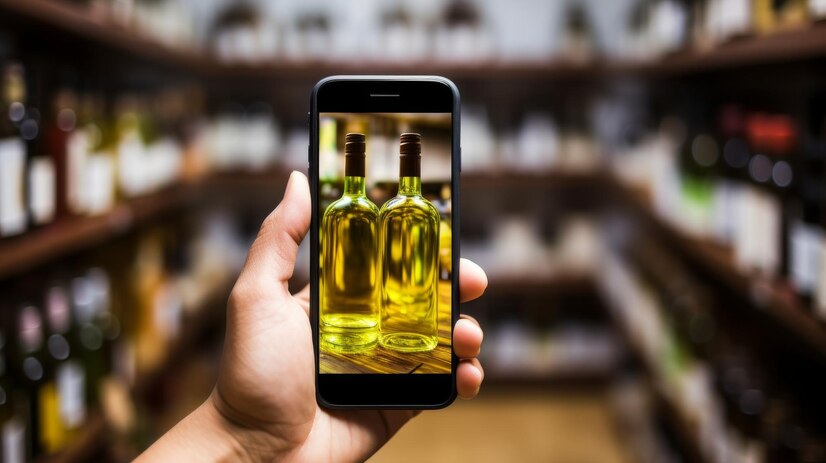
In the era of digital convenience, building a profitable liquor delivery app has become a promising business venture. The increasing demand for on-demand services has extended to the alcohol industry, making it an opportune time for entrepreneurs to dive into this market. This guide will walk you through the essential steps to successful liquor delivery app development from scratch, focusing on both the business and technical aspects.
Understanding the Market Demand
Before diving into the development process, it’s crucial to understand the market demand. The global online alcohol delivery market has seen significant growth, driven by factors such as the convenience of doorstep delivery and the rise in e-commerce. Researching consumer behavior, preferences, and trends will help you tailor your app to meet the needs of your target audience.
Defining Your Business Model
Choosing the right business model is critical for the success of your liquor delivery app. Here are a few popular models to consider:
- Aggregator Model: Partner with multiple liquor stores and offer their products on your platform.
- Dedicated Model: Operate your own warehouse and manage inventory and delivery.
- Marketplace Model: Allow individual vendors to list their products on your app and handle deliveries themselves.
Evaluate the pros and cons of each model and choose the one that aligns with your business goals and resources.
Key Features of a Successful Liquor Delivery App
To ensure your app stands out in the competitive market, it’s essential to include features that enhance user experience and streamline operations. Here are some must-have features:
- User Registration and Profile Management: Allow users to create and manage their profiles easily.
- Product Catalog and Search Functionality: A well-organized product catalog with a robust search feature helps users find their desired products quickly.
- Secure Payment Gateway: Integrate multiple payment options and ensure secure transactions.
- Real-Time Order Tracking: Provide real-time updates on the order status and delivery process.
- Rating and Reviews: Enable users to leave feedback on products and services.
- Push Notifications: Keep users informed about promotions, order status, and new arrivals.
- Loyalty Programs and Discounts: Implement reward programs to encourage repeat customers.
- Age Verification: Ensure compliance with legal requirements by verifying the age of users during registration and purchase.
Alcohol Delivery App Development: Step-by-Step Process
Building a liquor delivery app involves several stages, from planning to deployment. Here’s a detailed step-by-step process:
-
Market Research and Analysis
- Conduct thorough market research to understand the demand and competition.
- Identify your target audience and their preferences.
-
Define the Scope and Requirements
- Outline the features and functionalities of your app.
- Create a detailed requirement document that will guide the development process.
-
Choose the Right Technology Stack
- Select technologies that suit your app’s needs. Common choices include:
- Frontend: React Native, Flutter
- Backend: Node.js, Django
- Database: PostgreSQL, MongoDB
- Select technologies that suit your app’s needs. Common choices include:
-
Design the User Interface
- Focus on creating an intuitive and user-friendly interface.
- Ensure the design is visually appealing and easy to navigate.
-
Develop the App
- Split the development into frontend and backend tasks.
- Implement core features such as user authentication, product catalog, payment integration, and order tracking.
- Perform regular testing to identify and fix bugs.
-
Integrate Third-Party Services
- Use third-party APIs for services like payment gateways, geolocation, and push notifications.
- Ensure these integrations are seamless and secure.
-
Test the App
- Conduct comprehensive testing to ensure the app functions smoothly across different devices and operating systems.
- Focus on usability, performance, security, and compatibility.
-
Launch and Marketing
- Deploy the app on relevant platforms (iOS, Android).
- Develop a marketing strategy to promote your app through social media, influencer partnerships, and paid advertising.
Legal and Regulatory Considerations
Compliance with legal and regulatory requirements is critical for a liquor delivery app. Here are some key considerations:
- Licensing: Obtain necessary licenses to sell and deliver alcohol.
- Age Verification: Implement robust age verification processes to prevent underage sales.
- Geographical Restrictions: Be aware of laws regarding alcohol delivery in different regions and ensure compliance.
- Data Protection: Ensure the app complies with data protection regulations like GDPR or CCPA.
Monetization Strategies
To make your liquor delivery app profitable, consider the following monetization strategies:
- Commission from Vendors: Charge a commission on each sale made through your platform.
- Delivery Fees: Implement delivery charges based on distance, order value, or delivery time.
- Subscription Plans: Offer premium membership plans with benefits like free delivery and exclusive discounts.
- Advertisements: Display relevant ads within the app to generate additional revenue.
Marketing Your Liquor Delivery App
Effective marketing is essential to attract and retain users. Here are some strategies to consider:
- Social Media Marketing: Leverage platforms like Facebook, Instagram, and Twitter to reach your target audience.
- Influencer Partnerships: Collaborate with influencers to promote your app and build credibility.
- Content Marketing: Create engaging content such as blog posts, videos, and infographics to educate and attract users.
- Email Marketing: Use email campaigns to inform users about promotions, new arrivals, and special offers.
- Referral Programs: Encourage existing users to refer your app to their friends and family by offering incentives.
Conclusion
Building a profitable liquor delivery app like Drizly from scratch requires careful planning, a clear understanding of the market, and a focus on user experience. By following the steps outlined in this guide and incorporating the key features and strategies discussed, you can create an app that meets the needs of your target audience and stands out in the competitive market. Remember, continuous improvement and adaptation to market trends are essential to maintaining success in the evolving landscape of alcohol delivery app development.



